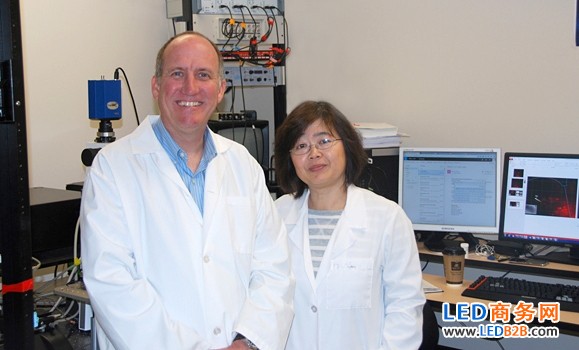Professor Zhang Zhang, a professor at the Department of Medical Neurology who is also the director of the Brain Rehabilitation Center, and his co-research partner, Ying Zhang, an assistant professor in the same department, said they successfully used led lamp light to stimulate the muscles can atrophy of nerve injuries and neurodegenerative diseases caused by paralysis of the muscles and react. (Source: Dalhousie University School of Medicine) Dalehouse surgery resident and doctoral candidate Philippe Magown and graduate student Basavaraj Shettar and Lavers and Zhang Ying collaborated on this major medical breakthrough experiment. Their research was published in the journal Nature Communications on October 13, 2015. ALLIN , https://www.nbdisplayapio.com
When the nerve fails LED light successfully stimulates the muscle directly to prevent atrophy
Professor Zhang Zhang, a professor at the Department of Medical Neurology who is also the director of the Brain Rehabilitation Center, and his co-research partner, Ying Zhang, an assistant professor in the same department, said they successfully used led The light stimulates the muscles and can cause atrophy and atrophy caused by nerve injuries and neurodegenerative diseases. 
"We found that as long as we could use the LED light to illuminate the muscles that were completely unconnected with nerves for one hour through the skin, we could prevent them from shrinking. Other studies succeeded in stimulating the nerves with light, but we were the first to be able to skip the nerves and directly In muscle research. This research has brought significant progress because of the failure of nerve tissue to completely fail or diseases such as amyotrophic lateral sclerosis (ALS, commonly known as gradual freezing), it is impossible to stimulate the nerves to make the muscles work. ."
Restore muscle function by LED light
To verify the theory that light directly stimulates muscle activity, the researchers implanted ion channels that respond to light in the genes of mice. This ion channel was first discovered on unicellular green algae. This ion channel allows the muscles to contract when stimulated by LED blue light.
Scientists seek simple ways to implant photoreactive ions into the human body
"Our next step is to develop a way to deliver photoreactive ion channels directly to the muscle without modifying the combination of genes. So we may have a way to find a viable therapy for humans."
For example, Lavers recommends that such ion channels be delivered to the hand muscles of patients with hand muscle nerve failure due to injury. “We saw the possibility of developing a 'LED light glove' that can be worn to avoid muscle atrophy and that can stimulate muscle contraction when the patient wants to take something.â€
Unlimited potential applications are expected to help patients with neurological diseases such as gradual freezing
This new technology, still in the research phase, has many potential applications, including the use of decidua to stimulate patients with gradual freezing, to help patients suffering from respiratory problems due to neuronal mechanisms and synaptic connections, stimulating their Respiratory muscles keep your muscles working. (